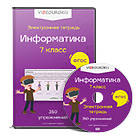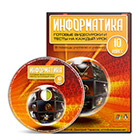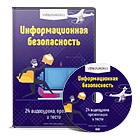The Universal Serial Bus (USB) is technology that allows a person to connect an electronic device to a computer. It is a fast serial bus. It is mostly used on personal computers. USB is also used on other devices, such as smartphones and video game consoles. USB connects different devices using a standard interface. Most people use USB for computer mice, keyboards, scanners, printers, digital cameras, and USB flash drives. There are over six billion USB devices around the world. The standard was made to improve plug and play devices. This means that a device can be plugged into a free socket, and simply work. The computer will notice the device. The computer sometimes installs special software to use the device. The device can be removed after it stops being used. This technology is called "hot swapping". "Hot swapping" means it can be plugged and unplugged while the power is on. The computer does not need to be turned off for people to change the devices. USB can provide a small amount of power to the attached device through the USB cord. Devices that only need a little power can get it from the bus, and do not need a separate electric power plug. That allows gadgets like USB battery chargers, lights, and fans. As of 2015, USB has mostly replaced several older standards. Those include the parallel port, serial port and SCSI. These old standards are still used for a few jobs where USB cannot replace them. The first version of the Universal Serial Bus was created in 1995. This new technology became an instant success. Since the introduction of USB, people that make electronic devices thought about how it could be used in the future. Today, USB connects a computer or other devices like laptops and MP3 players to peripheral devices. The bus was introduced by seven companies which represent the leaders in the industry of information technology: Compaq, IBM, Intel, Microsoft, NEC, Northern Telecom, and Digital Equipment Corporation (DEC). Several years earlier, adopters and developers of USB held a meeting called Plugfest at a special hotel in California to test their devices. They selected a hotel that included rooms for sleeping and for testing. The meeting lasted three days. During the meeting, the representatives of about 50 companies connected their USB devices to one general host system. The logo of the USB device also has its own history. The USB logo was in development for several months.
1994 - Seven companies united to begin the development of USB.
1995 - 340 companies formed the USB Implementation Forum.
1996 - More than five hundred USB products were already developing around the world.
1997 - USB Implementation Forum became richer with 60 more companies.
1998 - USB becomes the most popular technology on the market of electronics.
2000 - The introduction of USB 2.0. Today it represents the most widely used USB device.
2005 - USB becomes wireless.
2008 - USB 3.0 is introduced. It is over 10 times faster than USB 2.0.
2013 - USB 3.1 is introduced. It is about twice as fast as USB 3.0.
2015 - USB Type-C is introduced. It is a reversible connector, which means that you can plug it in both ways.
How USB is done
A USB system has an asymmetric design. It is made of a host, several downstream USB ports, and multiple peripheral devices connected in a star topology. Additional USB hubs may be included in the tiers, allowing branching into a tree structure with up to five tier levels.
A USB host can have multiple host controllers. Each host controller provides one or more USB ports. Up to 127 devices, including the hub devices, may be connected to a single host controller.
USB devices are linked in series through hubs. There is always one hub known as the root hub. The root hub is built into to the host controller. There are special hubs, called "sharing hubs". These allow multiple computers to access the same peripheral devices. They work by switching the access between PCs, either manually or automatically. They are popular in small-office environments. In network terms, they converge rather than diverge branches. A physical USB device can have several logical sub-devices that are referred to as device functions. A single device may provide several functions, for example, a webcam (video device function) with a built-in microphone (audio device function).
USB endpoints are actually on the connected device: the channels to the host are referred to as pipes.
USB device communication is based on pipes (logical channels). Pipes are connections from the host controller to a logical entity on the device named an endpoint. The term endpoint is occasionally used to incorrectly refer to the pipe. A USB device can have up to 32 active pipes, 16 into the host controller and 16 out of the controller. Each endpoint can transfer data in one direction only, either into or out of the device, so each pipe is uni-directional. Endpoints are grouped into interfaces and each interface is associated with a single device function. An exception to this is endpoint zero, which is used for device configuration and which is not associated with any interface. When a USB device is first connected to a USB host, the USB device enumeration process is started. The enumeration starts by sending a reset signal to the USB device. The speed of the USB device is determined during the reset signaling. After reset, the USB device's information is read by the host, then the device is assigned a unique 7-bit address. If the device is supported by the host, the device drivers needed for communicating with the device are loaded and the device is set to a configured state. If the USB host is restarted, the enumeration process is repeated for all connected devices. The host controller polls the bus for traffic, usually in a round-robin fashion, so no USB device can transfer any data on the bus without an explicit request from the host controller.

 Получите свидетельство
Получите свидетельство Вход
Вход












 The Universal serial bus (15.51 KB)
The Universal serial bus (15.51 KB)
 0
0 265
265 2
2 Нравится
0
Нравится
0


